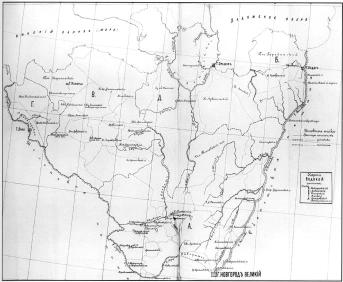|
|
Articles
/
Pogosts
PogostsAuthors
Yegorov, Sergey Borisovich
Plotkin, Konstantin Moiseyevich Persons
Kuzmin, Sergey Leonidovich
Lebedev, Gleb Sergeyevich Nosov, Yevgeny Nikolayevich Olga, Princess Platonova, Nadezhda Igorevna Selin, Adrian Aleksandrovich Tarasov, Igor Ivanovich Geography
Leningrad Oblast, the/Luga District/Gorodets Village
Historical Toponyms/Kositskoye Neighbouring Territories/Pskov Oblast, the/Plyussa District/Kotorsk, village Topographical landmarks/Luga River, the Topographical landmarks/Msta River, the Leningrad Oblast, the/Luga District/Nadbelye Village Historical Toponyms/Noviye Duboviki Historical Toponyms/Noviye Duboviki Historical Toponyms/Peredolskoye Neighbouring Territories/Pskov Oblast, the/Plyussa District Historical Toponyms/Prechistensky Tikhvinsky Pogost Leningrad Oblast, the/Boksitogorsk District/Somino Village Leningrad Oblast, the/Luga District/Spass-Kotorsk Village Leningrad Oblast, the/Tikhvin District/Tikhvin Town Topographical landmarks/Volkhov River, the Topographical landmarks/Volkhov River, the Historical Toponyms/Zasominsky Pogost Bibliography
Неволин К.А. О пятинах и погостах новгородских в XVI веке. СПб., 1853
Платонова Н.И. Погосты и формирование системы расселения на северо-западе Новгородской земли (по археологическим данным). Автореферат канд. дисс. Л. 1988 Селин А.А. Историческая география Новгородской земли XVI-XVIII вв. Южные уезды Водской пятины. Автореферат канд. дисс. Л. 1998 Сайт Северо-Западной археологической экспедиции НИИКСИ СПбГУ / Сост. С.Л. Кузьмин. URL: http://www.nwae.spb.ru Subject Index
Ancient settlements (selishche)
Fortified ancient settlements Mentioned in articles:
|
|




